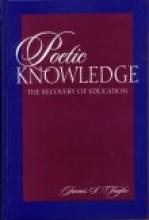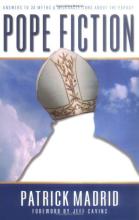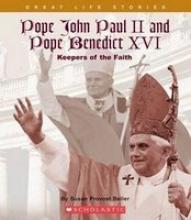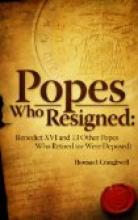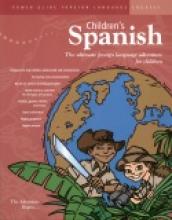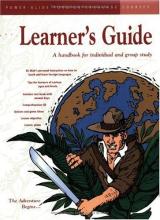No name
Poetic Knowledge
However, Taylor's argument is flawed both as a whole and in several of its parts. He resists making clear definitions, he is very negative about science and technology, his historical perspective is distorted, and his writing is problematic.
Resistance to clear definitions is a serious problem. From the start, Taylor speaks of poetic knowledge both as a "degree" of knowledge and as a "mode" of knowledge. By confusing these definitions (and others) Taylor undercuts his central argument with equivocation. As a "degree of knowledge," poetic knowledge is immediate to the knowing person, and may be likened to the lowest rungs of a ladder, the first rungs we climb and the ones we use to climb higher. Understood as a degree of knowledge, poetic knowledge makes a constant contribution to all other forms of knowledge, including scientific knowledge.
As a "mode of knowledge", the poetic is the spontaneous knowledge of an interior view, rather than the measured and outward knowledge of rationality. The poetic as a "mode" of knowledge is the opposite of the "scientific mode". Of course, just as one would be impoverished by looking only east and never west, one would be impoverished if one were to employ only one of two possible modes of knowledge. But they remain opposites.
There are good philosophical reasons and good historical precedents (many of which Taylor produces) for either definition of the term "poetic knowledge," – and even for using both definitions in various ways. But the definitions cannot be interchanged during an argument, and this is what takes place in Taylor's essay. Simply put, his argument is that poetic knowledge (definition 1) is a form of knowledge essential to humanity. But poetic knowledge (definition 2) is the opposite – and the antagonist – of scientific knowledge. By equivocation, poetic knowledge is essential to all knowledge and a powerful human good in opposition to science.
While Taylor does not actually call science an evil, he spares no opportunity to disparage both science and technology. This negativity about science would be comic if it were not encased in an erudite argument for the poetic approach to knowledge in education. Unfortunately, the intuitive and poetic approaches to knowledge are naturally open to romanticism and gnosticism unless they are properly balanced with rationality. Taylor has no balance in this matter. His negativity about rationality overflows even onto sentence diagramming and phonics. He quotes with approval the assertion that "authors teach children to read," and that reading is "imitative". If he merely pointed out that phonics is not enough; you need to have authors that children will enjoy, I would agree. But to scorn phonics? The depth of Taylor's impracticality is simply breathtaking.
A note on history is also in order, for Taylor makes repeated reference to the time of the Reformation and Renaissance, before which the poetic was accepted in Western thought. The correct association for the negative attitude towards intuitive knowledge is the seventeenth century, starting with Descartes, 1596-1650. This is the "Enlightenment" or the "Age of Reason", two names for the time that followed the Renaissance and the Reformation. (Taylor does refer to Descartes as the culprit, but never clarifies his place in history.)
First of all, the Renaissance long preceded the Reformation. It was not a single event, of course, but the starting date sometimes given is 1250, sometimes earlier. Certainly the architectural triumphs of the cathedrals belong to the Renaissance, as do, for example, Dante (1265-1321), Buridan (1300's), Leonardo da Vinci (1452-1519), and Copernicus (1473-1543). The early Renaissance is the time of the birth of modern science. It predates by hundreds of years the problem that Taylor speaks of. This fact alone should make clear that the rise of science is not the culprit in the loss of respect for poetic knowledge. Something else happened. This is not the place to say what, but only to urge in the strongest terms that no implication against science be received from Taylor's references to the Renaissance.
It may be that Taylor has confused the Renaissance with the Enlightenment. This would explain why he constantly pairs Reformation and Renaissance in the opposite of their historical order, which was Renaissance first, and then later on, the Reformation.
Finally, though it may seem trivial to close on a grammatical note, I shall complain about Taylor's sentence structure. The topic is difficult enough without the distraction of errors of grammar and construction which appear throughout his book. Usually, when a reader is confused about the structure of a sentence, it is his clue that he has not properly followed the author's argument. But in Taylor, it is just a reminder that this author regards analysis as an inferior mode of thought, and wants his argument accepted intuitively.
Because I love science and feed my wonder on the delights of a well-crafted physical argument as much as on violets and poetry, and because I strongly desire that science and faith be understood harmoniously, I cannot recommend this book as a resource for the classical revival in education.
Poetic Knowledge
"There are relatively few persons who can analyze as clearly and as lucidly the writings of Aristotle, Plato, and Aquinas as does this author. Like Taylor's educational philosophy, he seeks to move his readers' affections and will as well as their intellects, and he does this successfully." - Richard Harp, University of Nebraska
When discussing "poetic knowledge" (which is not the knowledge of poetry "but rather a poetic experience of reality"), we are entering into the realm of an intuitive, obscure and somewhat mysterious way of knowing reality that therefor does not lend itself to strict analytical dissection. Nevertheless, in Poetic Knowledge Taylor has managed "with pithy brevity...to provide a history of the treatment of poetic knowledge and to develop his own very persuasive account" – Ralph McInerny (U. of Notre Dame). He cannot reasonably be faulted for failing to make human emotions and intuitions as readily understandable as an isosceles triangle or an elementary rule of grammar - there is more to it than is "dreamt of in our philosophy."
Ironically, it is precisely that relentless demand of modern man (since Descartes) - that all be broken down into parts and pieces for study under a magnifying glass - that Taylor is warning against in his book. A flower loses its beauty when it is hacked into tiny pieces for too close observation; "whatever the sun is, it is not just a mass of burning gasses", though strict analysis might yield just that answer.
Indeed, in writing this book for a modern audience drunk on statistics and mathematical calculation, Taylor assumed the risk of betraying the very thing he was trying to save - the rest of man: his sense, his intuitions, his love of beauty, his integrity and very ability to love. Happily, like a good diagnostic physician,Taylor managed to poke and probe only deeply enough to give us the outlines, to reveal the essentials of the matter without killing the patient in the process.
Like a multi-faceted diamond, poetic knowledge may be viewed from different perspectives, with differing results. Thus it can be considered as both a "degree" of knowledge and as a "mode" of knowledge. As a "mode" of knowledge, poetic knowledge differs from "scientific knowledge" in that is it non-analytical, nor is it about the "outside" of things as observational science is. Rather, it is sensory-emotional, intuitive and deals with the goodness or "inside" of things. It begins with the immediate, direct apprehension of reality that inspires wonder and awe. As a degree of knowledge, it is less certain that mathematical knowledge, but more certain than a mere guess or coin-flip. In short, it is of one certain degree or order, and not of another. A mere review such as this cannot do justice to those distinctions, but that should suffice to account for the fact that Taylor may reasonably approach the matter from different angles without being guilty of the charge of causing needless confusion. No diamond-cutter would do less before striking the blow, and Taylor is writing about more than a mere diamond, he is writing about why women love the beauty and "poetic" meaning of diamond gifts and why men love certain women enough to buy them diamonds.
Taylor makes the point that we live in a world dominated by scientism, by mathematical formulae, which knows the price of all things and the worth of nothing.
He rightly traces this domination back to Descartes, who was a superb mathematician. But Descartes, in promoting his liberal arts of preference - the quadrivium, neglected the rest - the trivium. In stating the obvious - that our world is terribly imbalanced towards the empirical sciences and away from its heart and soul (which is closer to the subject of the trivium) Taylor does us no disservice, nor does he thereby libel the sciences. He is merely trying to restore the balance before science and math bereft of love and beauty calculate us into greater mechanistic slavery or thermonuclear oblivion. One who rights a tottering man ought not be accused of favoring the right over the left, or up over down. Indeed, for left or down to have any meaning, right and up must be preserved as well. Science and math have no future if man has no future. Taylor seeks to restore our future as men and women, not merely as "consumer units" or "human resources".
The Renaissance is a vague term, with a vague start. But out if it did indeed spring modern empirical science as a reaction against the domination of the early Renaissance by rhetorical teachers of the trivium such as Petrarch. Descartes, building on Galileo (1564-1642), and his mathematical arts of the quadrivium, were the ultimate victors in the Renaissance Battle of the Arts, which therefor did triumph - not in the early Renaissance - but in the period of the late Renaissance and Reformation when the trivium and poetic knowledge began to be neglected precisely because of the rise of the quadrivium at that time.
Just as in the late Renaissance, the Battle of the Arts rages and the mathematical sciences still hold the upper hand. They hardly need any more defenders. But like the teacher Keating in the movie Dead Poets Society, Taylor calls us to arms against the tyranny of modern science:
"This is battle...War! And the casualties could be your hearts and your souls...One reads poetry because he is a member of the human race and the human race is filled with passion! Medicine, law, banking - these are necessary to sustain life - but poetry, romance, love, beauty! These are what we stay alive for!"
Restore the balance and the war ends. Then science and faith can indeed be understood harmoniously, but they certainly are not so understood by those in the thrall of modern scientism. In Poetic Knowledge Taylor shows us the way to restore the balance - in the recovery of authentic classical education.
The reviewer is director of the Angelicum Academy Homeschool Program
Pope Fiction
This is a wonderful, very readable, book on history and apologetics that takes readers (chronologically) through 30 myths about the papacy and provides very clear answers. The myths cover topics such as: that Peter wasn't really a pope (because he refered to himself as a "fellow presbyter", that the Rock referred to in Matthew 16:10 was not really Peter, that Peter wasn't the ultimate authority in the Church because he was rebuked by St. Paul, that the papacy is merely a medieval Roman invention, that the existence of bad popes disqualifies the papacy as being part of Christ's plan for His Church, that Pope Pius XII was the last validly elected pope (the sedevacantist argument) and that Pope Pius XII was silent in the face of Nazi atrocities against the Jews during World War II.
In the tradition of St. Thomas Aquinas' Summa Theologica, Patrick Madrid argues against some fairly compelling beliefs of "the other side" in order to help readers more fully understand Catholic doctrine and tradition, as well as be prepared to answer difficult questions posed by non-Catholics and confused Catholics.
Anecdotes and well-chosen quotes really help to illustrate the fallacies of the arguments and make the counter-arguments quite memorable. These responses include quite a bit of pertinent historical details, references to the Bible and the Catechism of the Catholic Church and lots of apologetics "ammunition" for conversations with those who stand against the Pope and the Catholic Church.
Suitable for high school and adult reading.
Pope John Paul II
Pope John Paul II and Pope Benedict XVI
Popes Who Resigned
Power Glide Children's Spanish
Also known as Power Glide Spanish Junior Adventure Course
This creative multi-sensory language course for children (designed for preschool through 4th grade) provides an intuitive beginning in Spanish to children through the use of puzzles, games, stories and music. One major plotline involving two children and their grandfather carries through the entire set including adventures on Isla de Providencia and the Yucatan Peninsula as well as side stories and Spanish lessons woven in along the way. Many of the English stories contain Spanish words here and there so children can encounter them and gain familiarity. The three parts to the children's text gradually increase in difficulty level. Families could use one book each year for grades one through three or proceed more quickly if the children start when they are a little older.
The first workbook (143 pages) is basically a simple picture book that children can look at while listening to the first four CDs. It is designed especially for preschool through 1st grade but could be used by children as old as 4th grade who are just getting started in Spanish. Children are instructed to point to the pictures as they recognize the Spanish words as well as filling in blanks and drawing and coloring pictures. The text is in a very readable large print. Children will learn familiar phrases, and sentence structure as well as a small working vocabulary. There is more of an emphasis in learning to use Spanish words properly and understanding Spanish when hearing it than on building an extensive vocabulary at this early stage. My young children have frequently asked to pull out the books and CDs because they think it's fun!
The Level II workbook (92 pages) begins a new segment of the story where the two children are trying to find their grandfather and help solve a mystery. To do this they must learn some Spanish words and work their way through a number of stories. This text contains most of the script of the audio plus pictures, vocabulary with pictures and puzzles to complement the audio CDs. The audio text uses a number of songs and ditties to help practice some basics of Spanish conversation and vocabulary. This text strikes me as quite a bit more challenging the first volume, but young children could still learn a great deal from just listening and using the pictures in this text, even if they aren't ready to read along with so much of the script. It is intended for 2nd through 4th grade. One really nice thing about this text is that the corresponding audio tracks to each piece of text are clearly marked.
The Level III workbook (109 pages) is also intended for the 2nd through 4th grades. It continues in a similar format to Level II. Now, in the main story, the children have found their grandfather and proved their worth in helping them find the hidden treasure stolen by the pirate Don Diego de Consuelo.
The 174 page Parent's Guide covers all three children's books. It includes the entire script of the audio CDs and miniature copies of the textbook pages as well as instructions for getting the most out of the texts and some recipes to complement your family's Spanish studies.
I have found this to be a nice place to begin learning Spanish before getting to a more formal early study of vocabulary and grammar in a text like Learning Spanish with Grace (reviewed below).
Copyrights 1999-2001
four full-sized softcover books (total of 520 pages) + 8 audio CDs and one CDROM
This program was donated for review by Power-Glide Foreign Language Courses
Power Glide Spanish
This is an expensive, but in-depth conversational Spanish program that is very popular with homeschoolers. The text, test booklet and workbook come with nine audio tapes or CDs (depending on the option you choose when you purchase the program) and an optional CD ROM and audio CD set. These options should be looked at very carefully when ordering as the operators often don't know which set is which.
Several months ago we decided to invest in a Spanish program. The question was, which one? My children are quite young, but have been exposed to Spanish during our years in San Diego, from stories such as The Lady of Guadalupe and the Josefina Montoya books from the American Girls series, and the Catholic Parish in downtown Milwaukee which we attend most Sundays which has a vibrant Hispanic community. When my oldest daughter (at age 7 1/2) began showing an interest in learning Spanish, my husband and I thought it was important to take advantage of her interest now, especially since childhood is supposed to be an excellent time to introduce a foreign language.
First we looked at the The Learnables, which is another homeschool-friendly program, but which is completely book-bound: the book has only pictures and the audio portion is in Spanish only. It's a neat idea, but not what we were looking for.
We wanted something that could be listened to in the car (especially to and from daily Mass) or while the children were playing - even when they didn't have the book open.
We heard a little about the Power Glide program (mostly the Latin edition) from fellow homeschoolers and learned that although it covered enough material for a 2-year high school course, that it was enjoyable for young children as well. That was enough for us - we decided to try it.
I have to say that we're really, really happy with it. Although we've hardly cracked the books yet (that will come in time, I'm sure), we've listened to the CDs over and over and are beginning to pick up some of the language. The CDs are filled with classic folk tales and fairy tales in alternating Spanish and English, stories in English that contain some recognizable Spanish words (that can be understood from the context), short (and often funny) conversations in alternating languages and other creative way of introducing Spanish (including some exercises that are designed to be used with the book). Different voices provide a diversity of accents and dialects to broaden exposure to the language.
All the material is suitable for family listening and my own children enjoy the stories enough to request them over and over.
Although the price is rather high (around $150 for the CD set with the CD ROM), we felt that, as a reusable program for all of our children for all of their school years, it was a worthwhile investment.
The cardboard container that the CDs arrive in is rather inadequate - especially for care use. We picked up an inexpensive zip-up CD folder to protect the CDs.
Set contains: text, learner guide, test book and choice of audio cassettes or CDs
Copyrights 1995-1999
Power-Glide Adventure Tools for Building Language Vocabulary
This elegantly simple resource provides an introduction to nouns in six different languages in a way accessible to young children. (The point isn't necessarily to overwhelm them with all six languages at once - you pick your language of interest or let them play around and see what they like.) The front of each large glossy card has a simple, child-like illustration of the object or a symbol representing the noun. (For example, January is represented by a Snowman, December is represented by a Christmas tree.) The back of the card gives the word in English as well as six other languages - Spanish, French, German, Japanese, Russian and Latin. All the words chosen are child-appropriate, but the set is suitable for all ages.
The cards are intended to be an introduction or a study aid to students using the various Power Glide Courses. You choose which language you want to use the cards for. The audio CDs are arranged so that each language has its own segment on the CDs. This is less expensive to produce than an individual set for each language. But, it's also really neat because you can play around with languages with young children to see which ones they're interested in. They can learn to count in all six languages. Some of them may also be interested in seeing the relationships between the languages and where similarities lie (this is especially useful since Latin is one of the languages included).
The Audio CD is a very nice recording - very straightforward with the narrators alternating between English and the language of choice. Just skip to the segment of your language choice and the entire text for that language is all in one place.
Categories of Nouns:
- Months of the Year
- Seasons
- Days of the Week
- Numbers: 1-10, 20, 30, 40, 50, 60, 70, 80, 90, 100, 1000
- Colors
- Shapes (Six Basic Ones)
- Body Parts
- Modes of Transportation
- Places (Post Office, Library, etc.)
- Family Members
- Clothing
- Animals
- Fruits
- Vegetables
- Beverages
- Snacks
- Meals
- Things Outside
- Rooms
- Kitchen Items
- Bathroom Items
- Bedroom Items
- Family Room Items
A nice little feature for those studying Latin is that the Latin words include the genitive ending and the gender of the noun (very handy!).
Power-Glide has made available a page of games to use with these cards which can be viewed on their website http://www.power-glide.com/games You can also view sample cards by clicking here. A verb set is also available.
201 full-color 4 x 6 inch cards plus 2 audio CDs

